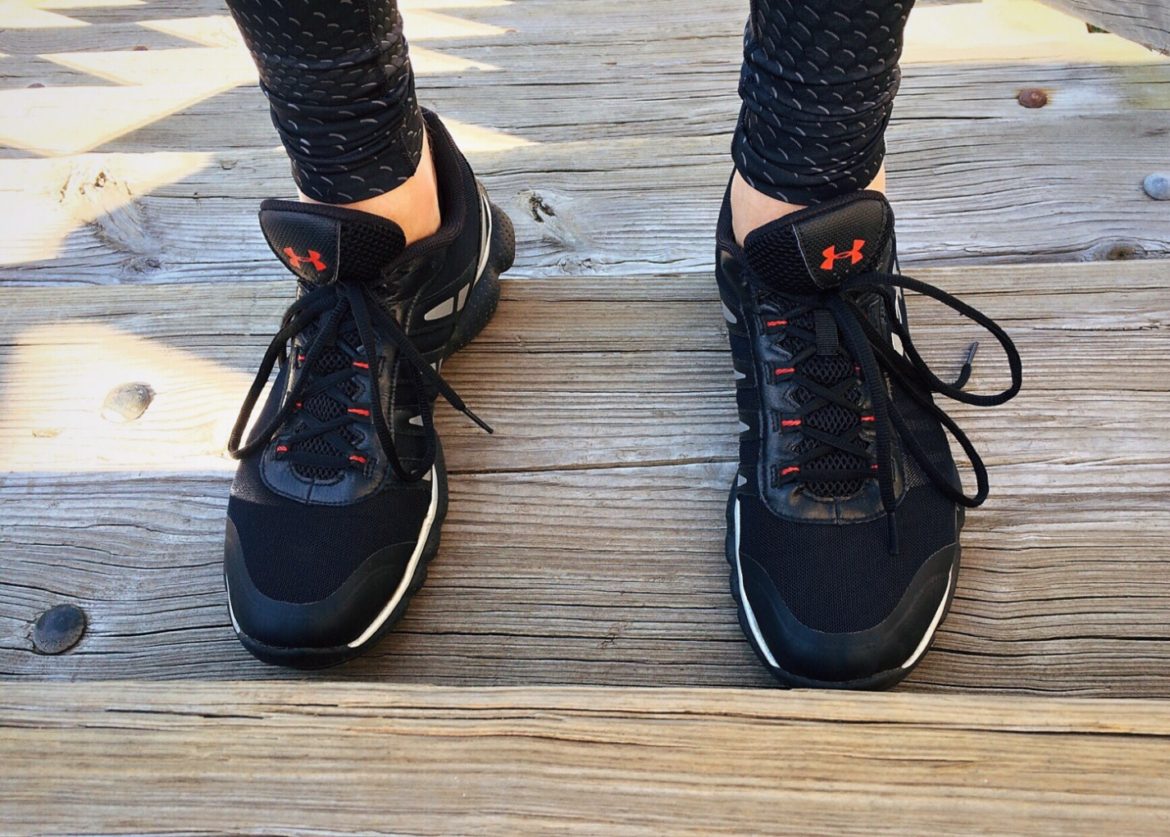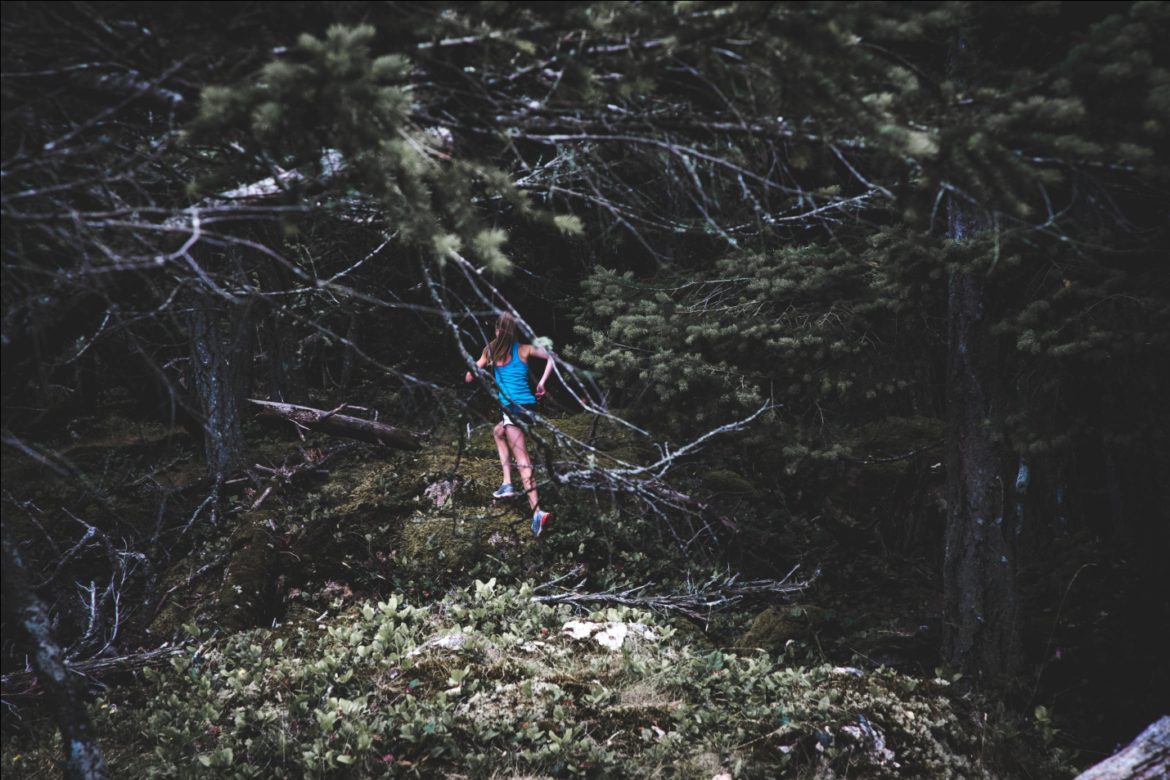A Beginner’s Guide to Trail Running
Whether you:
- are bored of running on the same old tracks and need a change
- are in search of a new hobby that’s also good for you
- want to start a new physical activity to get fitter
- or just want some fun activity to partake in with (or without) friends,
trail running can sound like a great idea.
However, it can be a little difficult to figure out what to do and where to start when it comes to this popular outdoor sport. This is why we’re come up with a handy guide that will help you learn everything you need to know about trail running for beginners.
What is Trail Running?
Before we get into the specifics of the trail, let’s learn what it really is. This is important since there is still a fair amount of debate about what actually constitutes a trail and the rules – if any – of taking part in the activity.
According to the purists, a trail must be remote. They argue that it needs to undulate – that it should lose and gain elevation along the way.
These definitions are right to an extent, but they also make it difficult to truly take part in the activity. Yes, a trail should be unpaved; but how much of it? All of it or just parts of it? If you think about it, it can be a huge issue to want the entire trail to be unpaved. Because once you run on a trail, it means that it’s now technically paved, and you can’t take it again.
Instead, it is better to just keep things simple. For a beginner, you should assume that a trail is a footpath that is mostly unpaved. This means that you don’t need to head out to the jungle to find a trail, as your local park may have a few trails waiting for you to explore.
Basically, when it comes to trail running, all bets are off. You don’t have to stick to a track or follow a map. And as a result, you are free to explore a lot more of the world.

Does it Require Any Equipment or Specialist Kit?
So you have complete freedom – but it comes at a price. Exploring the unknown means that you can’t make use of the beautifully constructed roads, the street lights, the conveniently placed road signs, and all the things you take for granted. You’re on your own outdoor.
To make sure you aren’t caught off the beaten track, you need to carefully think and plan about your gear.
For instance, those old, worn-out running shoes you’re still using may not make the cut. You may require a pair of trail shoes depending on the conditions under your foot, as well as the weather. As compared to conventional running shoes, trail shoes provide better heal support, have robust soles to prevent stones from breaking through, as well as large lugs to provide friction even in the slipperiest mud. It is important to take your time in picking the best trail shoes for yourself. On more advanced trails, a good grip can be the difference between life and death, so don’t skimp on this one.
Whether you are familiar with the area you’re planning on running in or not, it is a good idea to invest in a map and a compass (and also taking out the time to learn how to use them) or at least a GPS watch. Remember that you don’t have any road signs or paved trails to guide you through your run. You may think that you’re familiar with the area, but you can just as easily get lost during your trail run, no matter where you are. Having a dependable method to find your way back is a necessity in such a situation.
Head torches are another essential. Since you won’t have any street lights that come with standard running tracks, you never know when a head torch may come in handy.
It goes without saying that you’ll need a big bottle of water which can be easily carried with you. Additionally, some healthy snacks such as protein bars could help make the run easier if you’re planning for a long one. A pair of sunglasses and a cap is also a good idea to have on you.
Safety
By nature, trails are more remotes than roads, tracks, or pavements. This means that it will be much more difficult to find help if you get lost or injured. Therefore, some planning prior to your trail run is always necessary. Aside from plotting your intended route in advance and looking at the weather forecast, you also need to have a portable emergency kit on you.
Be prepared for any calamity that may occur before you set foot on the trail. At the very least, this means extra layers and a small first aid kit. You may not even have to use this – but needing it when you don’t have it is definitely worse than having it and not needing it.
Another option to better prepare for trail running is to sign up for an outdoor skills course. This will help reduce your risk of getting hurt.
Technique
It is fairly easy to get started with trail running. However, it does require more technique than you may realize. If you are absolutely new to trail running, a relatively straightforward countryside path is a good place to start. It is easier to build up your strength and technique on simpler terrains, which will help you stay free of injury for longer. Once you get used to simpler trails, you can head into the mountains or more remote trails.
Trail running comes with its own difficulties. Even a seasoned trail runner can take a few tumbles from misjudging the viscosity of the mud. In fact, even some good old fashioned trail furniture can wipe you out in seconds. So don’t push yourself too hard too soon. Instead, start off easy, so you don’t end up hurting yourself.
Unlike conventional roads that come straight to you, a trail is generally three-dimensional. The experience is physically and mentally challenging as you dodge loose or slippery ground, jump trip hazards such as tree roots, and navigate your way through a path that goes up and down without a rhythm.
However, if you get the technique rights, there are several significant health and mental benefits of the activity. The varied terrains engage muscles that you probably didn’t even know existed. This means that not only will you be building strength and endurance in your legs, but you’ll also be working out your core.
Leave Your Standard Objectives at Home
As we’ve already established, running on trails is comparatively difficult than running on set paths. Therefore your ‘have to run 5 miles in an hour’ may not be a reasonable goal for trail running. The trail will dictate your pace. So the best approach is to ditch your “minute mile” expectations and go with the flow.
It is also important to keep in mind that some trails are absolutely un-runnable, especially during bad weather. If you come across such trails, forcing yourself through it for the sake of it may cause deadly side effects. Instead, take a different path. Let yourself be guided by the path you’re on. Set your goals and objectives based on what is in front of you, and leave your path and pacing objectives at home.

Trail Running Tips for Beginners
Now that you know about the basics of trail running, here are a few tips that will help you get started and enhance your technique.
· Pay Attention to Your Feet
The process of learning trail running is a bit like learning to drive. When you start driving at first, you are hyper-focused on every single thing on the road. From speed bumps to tiny wrappers some irresponsible citizen may have dumped on the road, you notice everything. However, as you get used to running, you are less focused on these things. This doesn’t mean that you don’t notice them; it’s just that you don’t need to pay as much attention to notice them. As you get used to the road, you develop a heightened awareness of it.
The same principle applies to trail running. When you first start, you need to be hyper-focused on the terrain and make decisions about your foot placements as a response to it. A stable core helps facilitate this. However, it doesn’t take too long to get confident. With some experience, your concern about foot placement and your fear of falling will reduce significantly. You will become more attuned to the obstacles you may encounter while trail running and won’t have to stay focused on every tiny detail.
· Slow Down and Feel The Run
Running on the trails can be a lot more demanding—especially the particularly technical trails consisting of roots, snakes, and other obstacles. Therefore, you may need to run at a slower pace as compared to when you’re running on the road.
Instead of trying to exert yourself, trail running is a good opportunity to run by your perceived effort level. Here’s a rule of thumb: If you cannot speak a full clear sentence while running, you are working at a high tempo effort. This is an indication that you need to slow down to really feel the run. Your runs should be done in an easy state and should allow you to easily converse with your friends or fellow runners.
· Protection from Nature
Trail running exposes you to the elements of nature, which is a good thing. However, not everything in nature is good for you. Natural beauty comes with a few natural dangers, which you need to be cautious about.
For starters, get the basics rights. Wear good sunscreen, a hat, and sunglasses. Not only will this protect you from the sun, but also tree branches and bushes, and will prevent rainwater from reaching your eyes. If you know the trail has a lot of debris and small stones, investing in shoe gaiters would be a great idea. So do your research about the trail beforehand, and ensure to take all the protective measures that you may need on the trail.
· Use Your Arms
Running is not just about legs – your arms play a very important role in perfecting your technique. If you only focus on your legs and leave your arm loose or rigid, you will end up averting yourself from getting all the benefits of this sport.
Allow your arms to be relaxed during the trail run. This will enable them to move freely by staying in tune with the rest of the body. This happens because your arms are counter-balanced by your legs. So whatever your feet are doing will be mirrored by your arms, which helps you improve your technique.
· Patience & Recovery
As you start getting into trail running and learn that you’re enjoying the activity, you may be tempted to want what is more than sensible. It is a good idea to not give in to these temptations.
Be smart about your progress into trail running. This means allowing yourself adequate time to recover between sessions. Trail running requires you to recruit and move different muscles, which can be taxing for your body. Not giving your muscles enough time to recover can damage them over time. Your muscular-skeletal system also takes time to adapt to the different movements and forces of trail running.
Learning trail running requires some pain and hard work. However, the rewards of trail running make it all worth it. It is a workout for your body as well as your brain and allows you to engage all your senses. You’d be surprised how easy it is to find a trail, even if you’re living in an urban city.
So make use of it, and try getting yourself involved in this activity; you won’t regret it.


